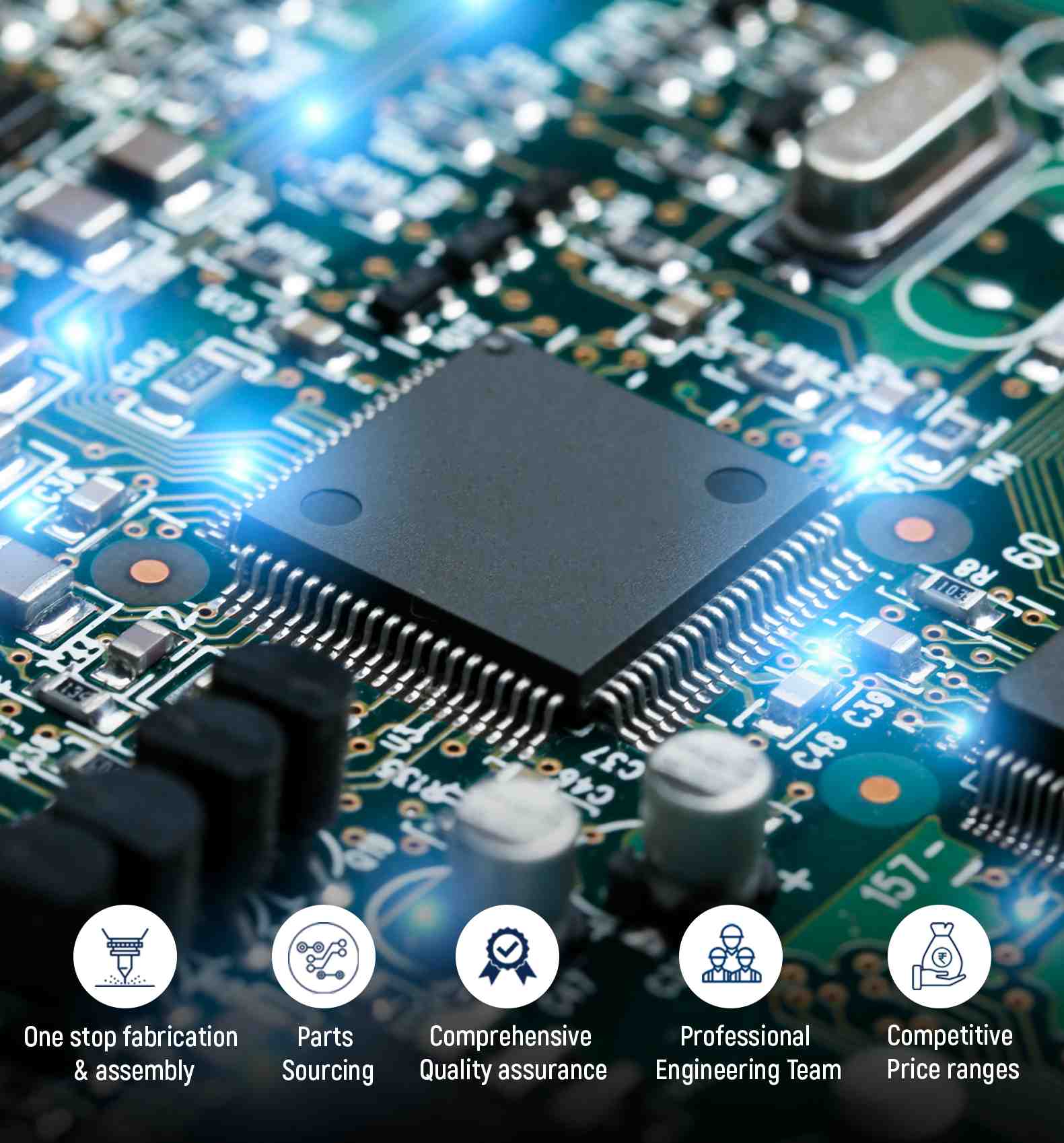There is a constant need for small, effective, and high-performing electronics in the quickly changing field of electronics. Modern electronic devices are built on Printed Circuit Boards (PCBs), a crucial component that is at the core of these developments. The intricacy and sophistication of PCBs increase with the advancement of technology. The creation of sophisticated PCB layering techniques, which are essential to improving productivity and efficiency in the electronics manufacturing industry, is one of the most important developments in the field of PCB layout design service.
The foundation of PCB Layering
A printed circuit board, or PCB, is simply a board with conductive tracks, paths, or signal traces carved from copper sheets glued onto a non-conductive substrate to link electronic components. Conventional printed circuit boards (PCBs) usually consist of a single layer of conductive material. Nevertheless, multi-layer PCBs appeared as the demand for increasingly complex and small electronics increased. These PCBs enable more complex layouts and higher component densities since they feature many conducting material layers spaced by insulating layers.
Evolution of PCB layering
One important turning point in the history of electronics production was the switch from single to multi-layer printed circuit boards. Complex circuitry, enhanced performance, and increased component density are all possible with multi-layer PCBs. The processes for PCB layering developed along with technology, leading to sophisticated PCB layering methods which exceed the limits of what is feasible in the electronics manufacturing industry.
The possibilities and applications of printed circuit boards have been greatly increased with the transition from single-layer and double-layer PCBs to multilayer PCBs. With a single layer of conductive material on a non-conductive base, single-layer PCBs are the most basic type and are frequently seen in inexpensive, simple electronic devices. Double-layer PCBs, which are used in fairly complicated applications such as industrial control systems and consumer electronics, have conductive material on both the top and bottom layers, which are separated by an insulating layer.
With the development of multilayer printed circuit boards (PCBs), which are made up of three or more conductive layers sandwiched between insulating layers, modern electronic items like laptops, cellphones, routers, and medical equipment can now have more complicated circuit designs and higher component density.
Benefits of Advanced PCB Layering
Adopting cutting-edge PCB stacking techniques has several advantages that improve electronics manufacturing’s effectiveness and performance:
Enhanced Component Density:
More components may be arranged on a single PCB thanks to sophisticated stacking processes, which makes devices smaller and more compact. In situations where space is limited, including in medical equipment and portable electronics, this is essential.
Enhanced Signal Integrity:
Advanced PCB layering techniques can greatly enhance signal integrity by lowering the number of connections and reducing the distance between components. In high-frequency applications, where signal loss and interference can negatively impact performance, this is especially crucial. This makes it easier to create gadgets with more features without sacrificing performance or compactness.
Enhanced Reliability:
The overall reliability of the device is increased by methods like rigid-flex PCBs and component embedding. The danger of failure is reduced by minimizing the amount of solder joints and interconnections, resulting in stronger and longer-lasting products.
Cost-effectiveness:
Although sophisticated PCB layering methods may have greater upfront costs, they may result in long-term cost reductions. Reductions in size and weight result in cheaper material costs, and increased dependability can reduce the need for replacements and repairs, which further reduces costs.
Enhanced Functionality:
Advanced PCB layering enables the development of systems with improved features without sacrificing size or performance by allowing more complicated circuits to be installed on smaller boards.
Choose Jayshree Instruments as your trusted partner for advanced PCB layering and experience the difference in your electronic products.







Recent Comments